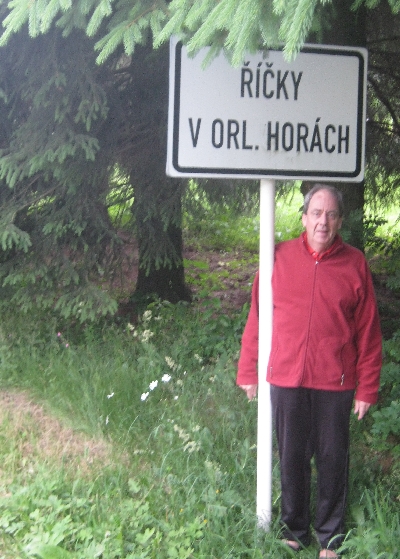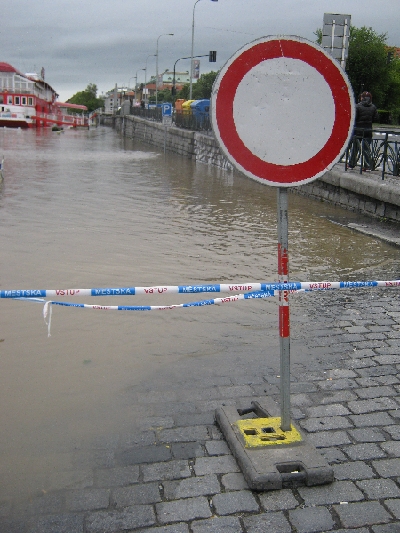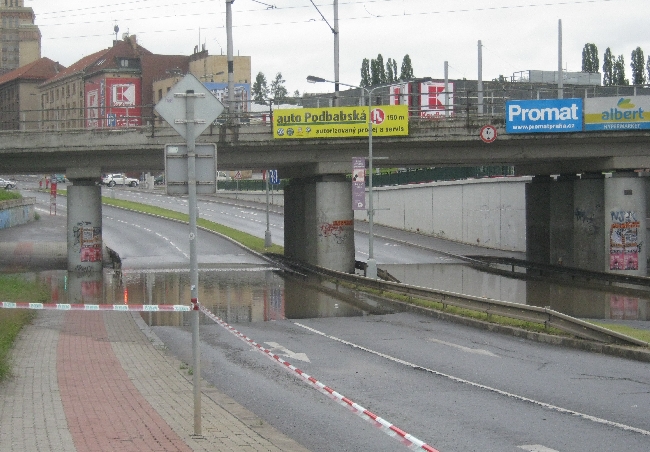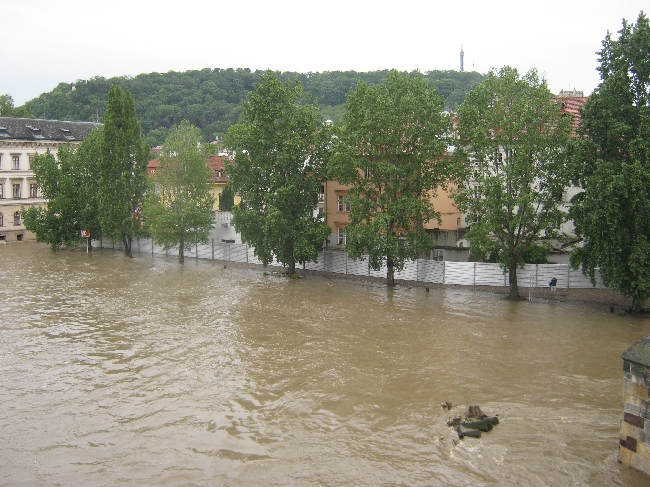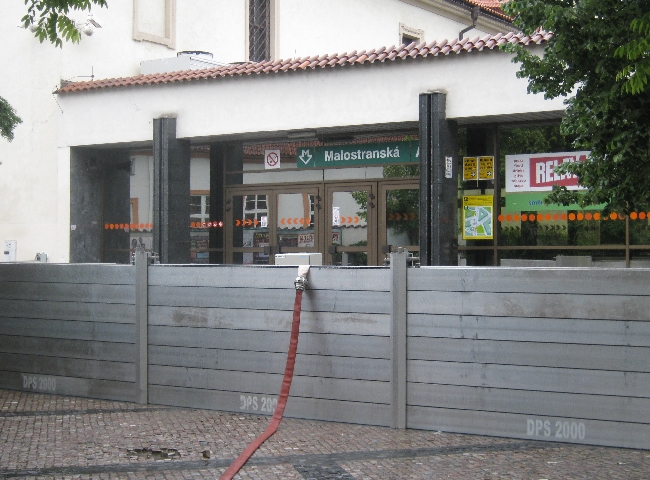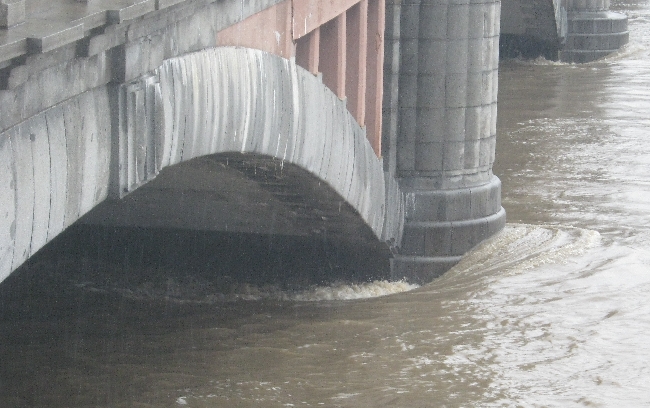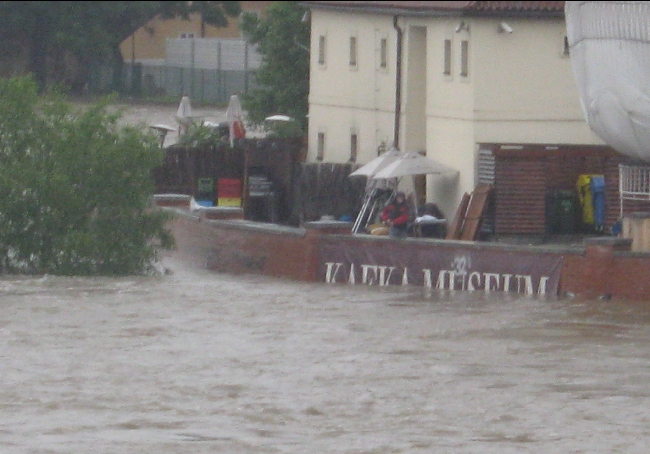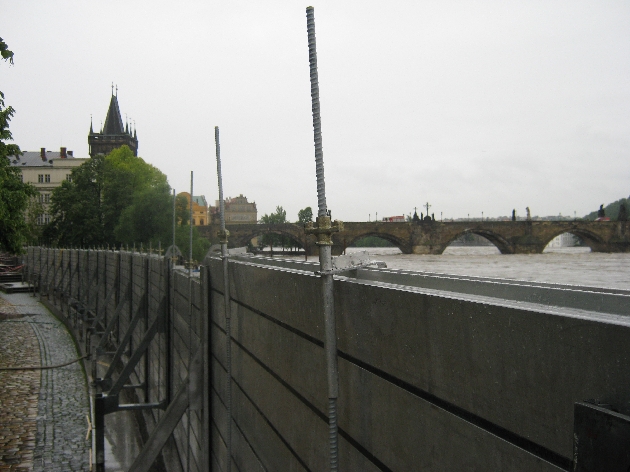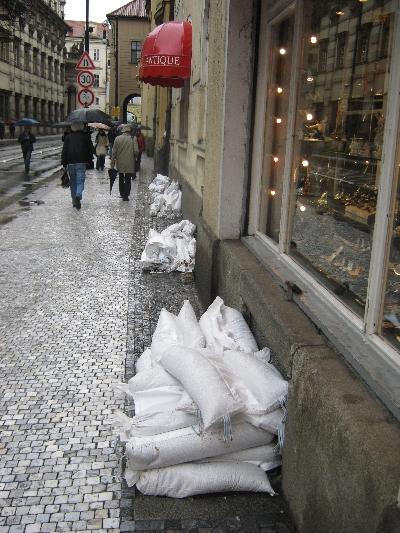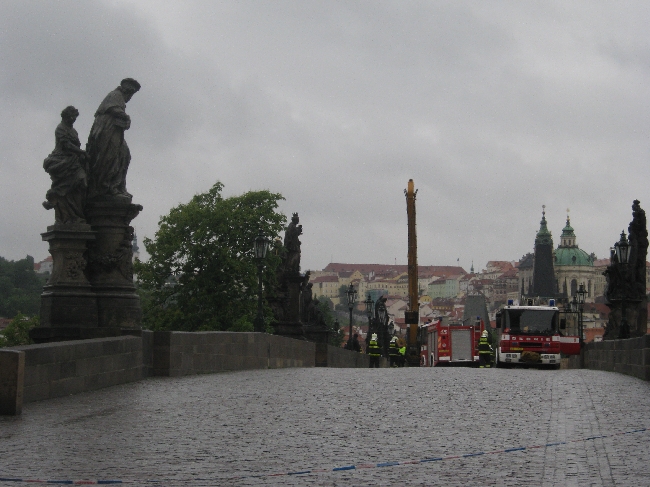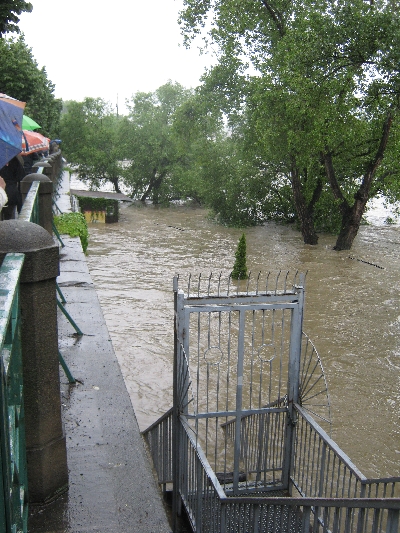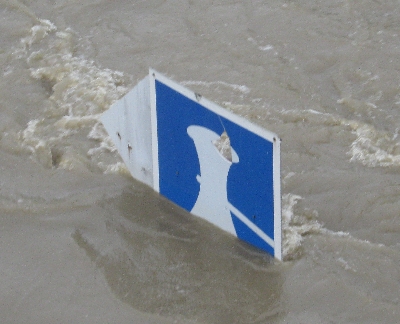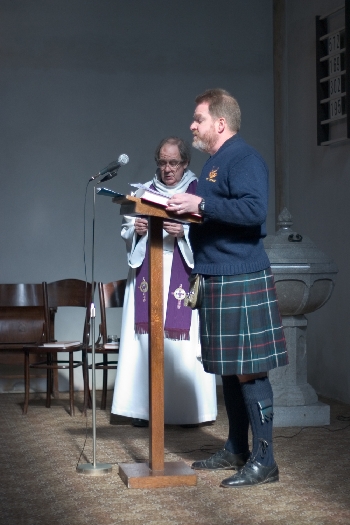
Last weekend, I had the privilege of officiating at two ‘occasional offices’, to use the term by which baptisms, weddings and funerals, are collectively known within the Anglican Church. On the afternoon of Saturday 7th September in Prague, I conducted my second wedding of 2013, whilst on the evening of Sunday 8th September, I conducted my first-ever baptism in Brno.
Unlike my earlier wedding this year, this second wedding took place in our worshipping home in Prague – Kostel sv Kliment/St. Clement’s Church. This has several major advantages from my point of view, not the least being that getting there was far less problematic than travelling to Bouzov Castle 🙂
As I have frequently written and said previously, the geography of a building, does impact on the way a wedding is conducted. As this wedding was the sixth wedding that I have conducted in St. Clement’s Church, I was thankfully far more at ease than normal. My only real concern as always, was being sure I had everything I needed either with me, or already in the Church, before setting out from the Chaplaincy Flat.
I got to Church more than an hour before the marriage service was due to begin, mainly to allow Larry the organist, plenty of time to practice all the music he was to play, well before the arrival of any of the guests. But it also allowed me to get the Church ready without any undue haste, and then to take the picture above.

Here is a close up of the table that I set up in the chancel apse where the necessary paperwork is completed. Rather than signing two marriage registers, as would be the case under the law of England and Wales, instead a four page marriage protokol has to be signed. But just like in England and Wales, the protokol has to be signed by the couple, as well as by two adult witnesses, and by me as the officiant. However, it being the Czech Republic, it also most importantly, needs to be stamped!
As you can see, I have pen, protokol and stamp in place, together with an Osvedcení, saying that the couple have fulfilled all the legal requirements allowing a religious marriage to take place, and an annotated protokol, to remind me as to who needs to sign where, to ensure I do not foul up anything!

The happy couple were David, an Englishman, and Maria, an American citizen from Puerto Rico. Both have lived in Prague for a number of years and for both, it was their second marriage. The supportive congregation was made up of family members, some of whom had specially flown in from the USA and the UK for the occasion, together with their friends, a mixture of expats and English-speaking Czechs. I could tell that there were a large number of expats present, by the laughter that followed my usual quip of saying, “This is the most important part of a Czech wedding ceremony”, followed by very firmly stamping the protokol 🙂
Sunday evening in Brno was a very special occasion, when I baptised Amelie Gabriela, the daughter and first child of Philip and Lenka Read, whose wedding I conducted in September 2010. This was the first-ever baptism for the Brno congregation since I started conducting regular monthly services there in January 2012. As I wrote in my earlier post in April, Phil and Lenka are having a house built just south of Brno, with a view of moving there permanently from England, later this year. Phil had two job interviews lined up for this week and I’m hoping to hear of a successful outcome, very soon.

Just like the wedding the previous day, my greatest fear was not having with me in Brno, everything I needed for the baptism service. When you are more than 200 km from home, it isn’t possible to pop back and pick up something you forgot! I also had the logistical problem of the Czechoslovak Hussite Church that we use for our Brno services, not having a font! I overcame this problem, by having a glass bowl on the altar, which can be seen on the right of this photograph.

After worship in Brno, we always share fellowship over refreshments. Last Sunday, our refreshments included large helpings of this amazing cake, made especially to celebrate Amelie’s baptism. Supporters of the Intercontinental Church Society (ICS), will also notice that I was busy distributing copies of ICS News and Prayer Diary and the recent Prayer Diary supplement. The financial and prayerful support of ICS has been a major factor in the establishment of the Brno congregation.

